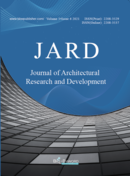Abstract
In this paper, nine indicators selected from three perspectives (convenience, environmental and location characteristics) and three regression models (OLS, SLM and SEM) are used to explore the influencing factors of housing sales vacancy in the Guangzhou Metropolitan Area, China. The results show that subway accessibility, peripheral aversion municipal facilities and distance from the CBD (Central Business District) are consistent with theoretical expectations. Subway accessibility is negatively correlated with the housing sales vacancy rates, while peripheral aversion municipal facilities and distance from the CBD are positively correlated with housing vacancy rates.
References
Park JI, 2019, A Multilevel Model Approach for Assessing the Effects of House and Neighborhood Characteristics on Housing Vacancy: A Case of Daegu, South Korea. Sustainability, 11(9): 2515.
Baba H, Hino K, 2019, Factors and Tendencies of Housing Abandonment: An Analysis of a Survey of Vacant Houses in Kawaguchi City, Saitama. Japan Architectural Review, 2(3): 367-375.
Liang SY, 2021, The Robust Influencing Factors of Urban Commercial Housing Vacancy Rate Based on EBA Model-Taking Shenzhen as an Example. World Scientific Research Journal, 7(2): 378-388.
Pan JH, Dong LL, 2021, Spatial Identification of Housing Vacancy in China. Chinese Geographical Science, 31(2):359-375.
Wang Y, Wu KM, Jin LX, et al., 2021, Identifying the Spatial Heterogeneity in the Effects of the Social Environment on Housing Rents in Guangzhou, China. Applied Spatial Analysis and Policy, https://doi.org/10.1007/s12061-021-09383-6
Wang Y, Wu KM, Zhang HO, 2021, The Core Influencing Factors of Housing Rent Difference in Guangzhou’s Urban District. Acta Geographica Sinica, 76(8):1924-1938.
